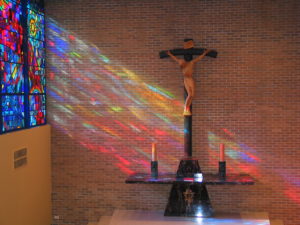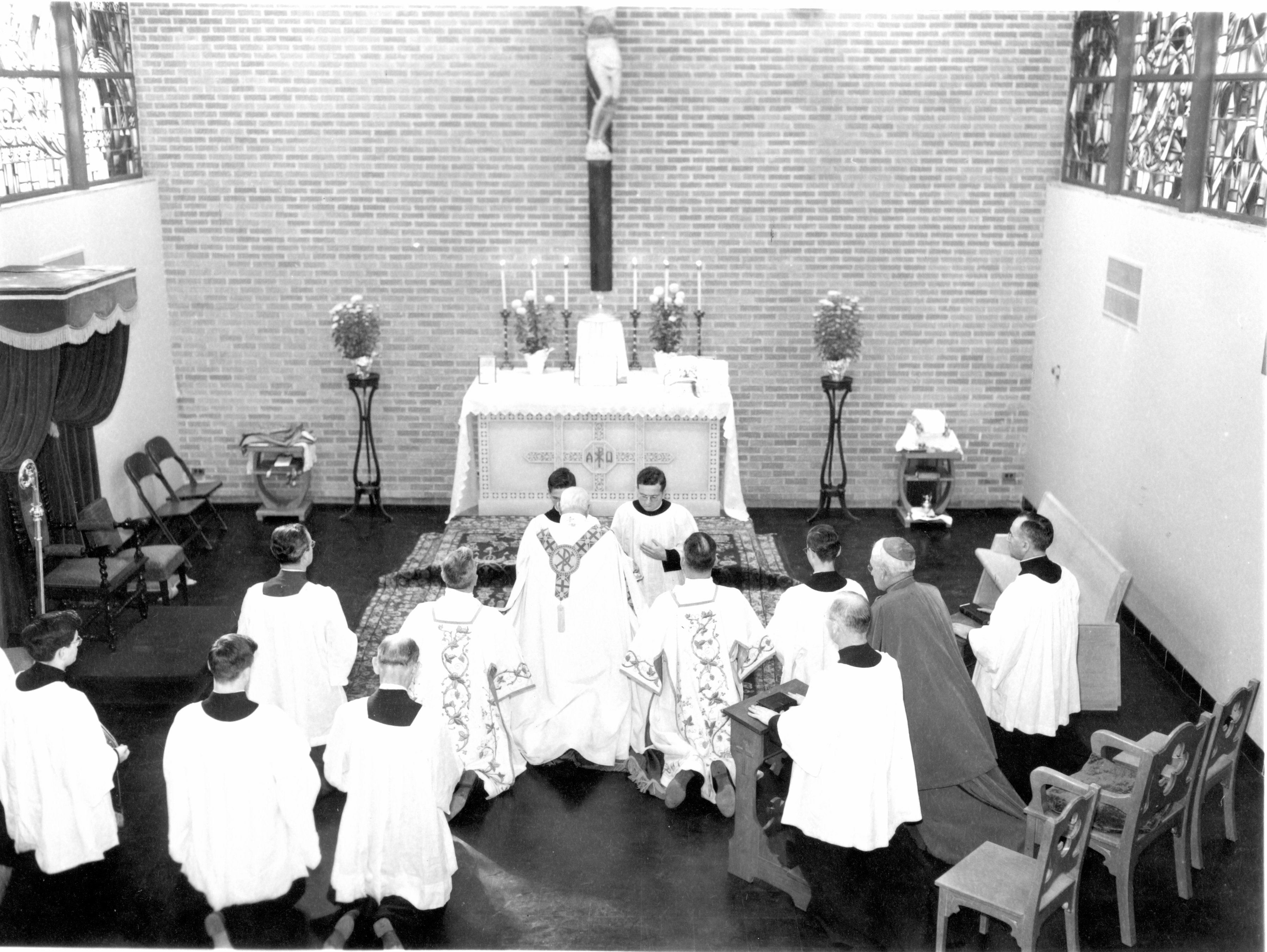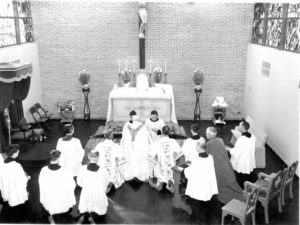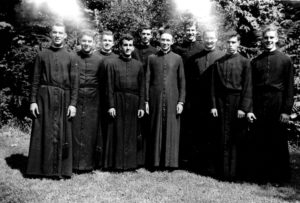The Viatorian Province Center in Arlington Heights is a hub of activity. Not only does it serve as the
headquarters for Viatorians in this country, but retired Viatorians live there and many different groups come for Bible study groups, Taizé prayer services, meetings and retreats, to name a few.
At the center of most any event, however, is the chapel. Its history dates back to 1951, when Viatorians moved their novitiate from Chicago to Arlington Heights, where the community purchased a large farm property.
When novices arrived, they watched the construction of the Province Center building, originally called Our Lady of Arlington Novitiate, which included residence rooms, classrooms, meeting rooms, a dining space, library — and a chapel.
The chapel was, and still is the jewel in the crown of the building. Its stained glass windows were commissioned in 1951 and ultimately created by a Vatican artist, Peter Recker, while its altar was designed as a cross by the building’s architect, Edo J. Belli. The Daprato Studios of Chicago executed his design in fine Italian marble.
Viatorians began using the chapel in September, 1952 and Cardinal Samuel Stritch, of the Archdiocese of Chicago, dedicated it in November of that year.
“We watched it go up,” says Fr. James Michaletz, CSV, who was among the first class of novices to profess their vows in the chapel. With him were Fr. John Milton, CSV, and Fr. John Linnan, CSV.

Multi-colored patterns of light provided by the creation windows enhance a spirit of reverence in the chapel
But what made the chapel a sacred space, was the people it drew, seeking quiet prayer, reflection and a deeper faith.
It continues to host daily Mass, vow ceremonies, ordinations, funerals and prayer services for the larger Viatorian Community.
“A holy space is when people of faith find it a place where they find God — and God finds them,” Fr. Milton said recently during a homily he gave at daily Mass in the chapel.
“As a fit location for the celebration of the Eucharist, a chapel or church reminds us that something truly holy is going on,” he added. “The challenge is to bring the meaning of what we do in that sacred space, to all that we do when we leave and interact with one another.”



